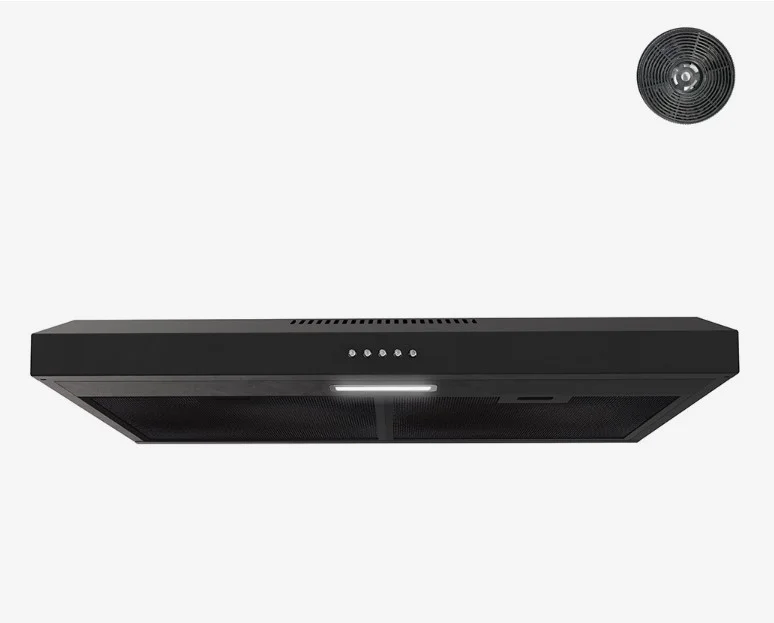As global demand for freshwater rises and environmental awareness deepens, household fixtures—especially toilets—play a pivotal role in resource conservation. Smart toilets have emerged as key players in sustainable bathroom innovation, marrying advanced technology with ecological responsibility. From energy-efficient flushing to leak detection and sensor-controlled systems, smart toilets offer practical solutions that align with modern green living. This in-depth guide explores how leveraging smart toilets contributes significantly to water conservation, while also adding convenience, hygiene, and value to your home.
-
Introduction: Why Water Efficiency Matters
Water scarcity is an escalating global concern. According to EPA’s WaterSense program, upgrading to water-efficient fixtures can save a family up to 13,000 gallons annually—impacting both utility costs and environmental footprints. Toilets alone account for around 30 % of household water use . Traditional toilets often use 3 to 5 gallons per flush, while modern high-efficiency models can reduce that to just 1.28 gallons or less. Smart toilets take conservation further, leveraging precise water control, sensors, leak detection, and intelligent flushing to minimize waste.
The global smart bathroom market, expected to reach $13.6 billion by 2027, reflects shifting consumer priorities toward sustainability, hygiene, and connected home integration. At StreamlineBath.com, our smart toilet selection exemplifies this eco-forward approach, balancing cutting-edge features with water-saving performance.
-
How Smart Toilets Optimize Water Usage
Dual‑Flush Systems
Smart toilets commonly feature dual‑flush technology, offering two flushing options: a low-volume flush (usually 0.8–1.0 gallons) for liquids and a standard flush (1.6 gallons or less) for solids. This tailored approach can reduce household toilet flush water use by up to 50 %, saving thousands of gallons annually. In some advanced models, sensors automatically select the flush appropriate to the waste type, delivering efficiency without user input.
Sensor and Automatic Flushing
Automatic flushing controlled by infrared or motion sensors ensures each use triggers only the required flush. This eliminates unnecessary dual flushes that reduce traditional toilet efficiency. Sensor-based systems often include pre-flush misting to reduce residue and cut down repeat flushes—a subtle but effective conservation strategy .
Water Adjustment and Precision
Some smart toilets can dynamically adjust water levels based on waste type or usage history. Sensor-driven measurement systems optimize flush volume—using as little as 0.6 gallons when appropriate, compared to up to 1.6 gallons in conventional systems . These micro-adjustments deliver measurable reductions in water consumption.
-
Leak Detection and Prevention
Undetected toilet leaks can waste hundreds of gallons daily. Smart toilets equipped with leak detection sensors identify continuous water flow and alert homeowners either visually or via smartphone notification . Early warning enables prompt repair, avoiding costly damage and water loss.
By using real-time tracking, homeowners can monitor usage patterns and be promptly alerted to abnormal consumption. This hybrid approach marries preventive maintenance with water conservation—both economically and environmentally beneficial.
-
Efficiency for Households: Real Water Savings
How much water can a smart toilet save? Research shows a household of four can conserve approximately 12,000 gallons per year by upgrading from traditional to smart toilets . That equals nearly 33 gallons daily—equivalent to an extra flush or two per user per day. Given projected water shortages in many coastal and arid regions, such savings are increasingly critical.
These figures don’t just benefit conservation; they translate into real utility cost savings. Reduced water usage decreases charges for water and sewage while easing pressure on municipal infrastructure.
-
Smart Toilets & Sustainability: Materials & Energy Use
Smart toilets are eco-friendly not just in use, but also in construction:
- Low-flow ceramics: Many are built using streamlined manufacturing processes and recycled materials, reducing carbon emissions .
- Energy-saving LED lighting and heated seats: Controlled by sensors and standby modes, these features minimize electricity use while enhancing user experience.
- Self-cleaning UV sterilization: Reduces reliance on harsh chemicals and water-heavy scrubbing—further minimizing environmental impact .
By combining efficient materials with smart energy management, these toilets align with modern green building standards and sustainable living initiatives.
-
Broader Bathroom Ecosystem: Integration with IoT and Greywater Recycling
Full Smart Home Integration
Smart toilets often support Wi-Fi or Bluetooth connectivity, enabling integration with home automation platforms and health apps. Sensor data can provide water usage analytics to the homeowner—helping occupants track conservation goals or detect anomalies .
Water Recycling Compatibility
Though not yet widespread, some smart toilets pair with greywater recycling systems—capturing clean rinse water from sinks or showers for reuse in flushing. Smart control systems ensure recycled water meets hygiene and safety standards, maximizing every drop of freshwater.
-
Additional Benefits: Hygiene, Comfort, Accessibility & Value
The water-saving capabilities of smart toilets are only part of the story. Other benefits include:
- Enhanced hygiene: Built-in bidets, air dryers, self-cleaning nozzles, and automatic lids reduce bacteria transfer and dependence on toilet paper.
- Comfort and convenience: Heated seats, ambient lighting, deodorizers, and night lights make the bathroom experience more luxurious and personalized.
- Accessibility: Ideal for elderly or disabled users—automatic seat adjustments, warm water cleansing, and air drying reduce strain from toilet paper use.
- Home value uplift: Modern buyers increasingly expect sustainable, high-tech fixtures. Smart toilets can boost resale value and appeal within eco-conscious markets .
-
Market Growth & Adoption: Why Now?
Industry Forecasts
The smart bathroom market, including toilets, mirrors, faucets, and showers, is projected to reach $13.6 billion by 2027, reflecting rapid consumer acceptance .
Drivers Behind the Surge
- Environmental concerns: Stricter water-use regulations and public awareness about scarcity.
- Post-pandemic hygiene standards: Demand for touchless, self-cleaning features has surged .
- Technology affordability: Prices have dropped, making regular-smart toilets more accessible.
- Supportive standards and incentives: In many regions, upgrading to water-efficient toilets qualifies for rebates and grants .
-
Choosing a Smart Toilet: Features for Conservation
When shopping for a water‑efficient smart toilet, prioritize the following features:
- Effective dual‑flush (≤ 1.0 / 1.6 gallons flush volumes).
- Presence sensors and automated flushing/misting.
- Leak detection and alerts (via LED or mobile).
- Low-energy extras: LED night light, programmable seat heater.
- Standby modes: Power-down features reduce unnecessary consumption.
- Health and usage analytics (optional through IoT integration).
Our StreamlineBath.com smart toilet lineup embodies these advances, promoting water conservation without compromising luxury or comfort.
-
Installation, Maintenance & Lifetime Considerations
Installation & Professional Tune‑Up
Ensure proper installation with:
- Correct flush valve settings.
- Secure sealing and fit.
- Sensor alignment and waterproofing.
Professional installers help uphold warranty and function longevity.
Maintenance Tips
- Regularly clean nozzles & bowl surfaces.
- Inspect seals and tighten components periodically.
- Update firmware if connected, to maintain leak-detection calibration.
Most smart toilets are designed for low maintenance, but regular checks ensure peak water efficiency and performance.
Longevity & ROI
Although pricier upfront, smart toilets often last 10–15 years with proper care. Over time, water savings, energy efficiency, and reduced paper costs more than offset initial investment—especially in larger households.
-
Case Study Snapshot: Homeowner Experience
Imagine the “Patel family” in a mid-size urban home:
- 2 adults + 2 children.
- Each engaged in 4 flushes per day, totaling ~5,840 flushes/year.
- Saving ~1.0 gallon per flush (traditional 1.6 → smart 0.6) → 5,840 gallons saved annually.
- Utility rate @ $0.005/gallon → $29 saved yearly on water alone.
- Leak detection caught a silent tank leak, avoiding 500 gallons/month waste → 6,000 additional gallons saved.
- Over 5 years: ~30,000 gallons conserved (~33% bathroom water reduction).
Multiply this household-level impact across communities and cities—smart toilets become powerful tools in collective water stewardship.
-
Future Outlook: The Next Wave of Water‑Smart Innovation
AI and Adaptive Learning
Future smart toilets may use machine learning to predict usage patterns—adjusting flush cycles for extra efficiency, or diagnosing minor malfunctions before leaks occur .
Integration with Homewater Ecosystems
They may be paired with HVAC, greywater recycling, and energy systems—creating water‑energy optimized homes. Imagine toilets that automatically divert purified greywater when fresh water is unnecessary.
Health Monitoring meets Sustainability
Advanced models already analyze health metrics (e.g., glucose, hydration) through sensors—future versions may correlate this with water usage for more precise conservation strategies while informing health decisions.
-
Smart Toilets vs. Conventional: At-a-Glance Comparison
| Feature | Conventional Toilet | Smart Toilet |
| Flush Volume | ~1.6–3.0 gallons | 0.6–1.6 gallons with dual/sensor flush |
| Sensor Flushing | No | Yes |
| Leak Detection | No | Yes with alerts |
| Bidet & Drying | No | Yes |
| Seat Warming | No | Yes (with economy settings) |
| Auto-Lid | No | Yes |
| Energy Use | Minimal | Low‑energy idle mode |
| Smart Integration | None | Wi-Fi/Bluetooth + analytics |
| Water Savings | Baseline | ~30–50% reduction in flush water use |
-
Ready for the Water‑Wise Revolution?
By choosing a water‑efficient smart toilet from StreamlineBath.com, you’re:
- Reducing water waste by thousands of gallons/year.
- Lowering utility costs and household expense.
- Improving hygiene, comfort, accessibility, and elevation of bathroom design.
- Supporting environmental sustainability and responsible resource use.
We offer a broad range of smart toilets—dual-flush, sensor-driven, heat-equipped, bidet-enabled—to fit your family’s needs and your bathroom’s aesthetic. Each model is backed by expert support and installation guidance.
15. Conclusion
Smart toilets stand at the intersection of sustainability, technology, and everyday comfort. They conserve water through efficient flush systems, leak alerts, intelligent sensors, and adaptive water adjustment. Beyond conservation, they promote hygiene, accessibility, energy savings, and modern bathroom aesthetics. As the world grapples with water shortages and resource crises, smart toilets offer a practical, impactful solution—making green living accessible, convenient, and stylish.
Join the movement toward intelligent water stewardship. Upgrade to a smart toilet and transform your bathroom into a sustainable, connected space—one flush at a time.





